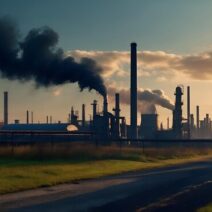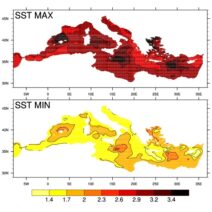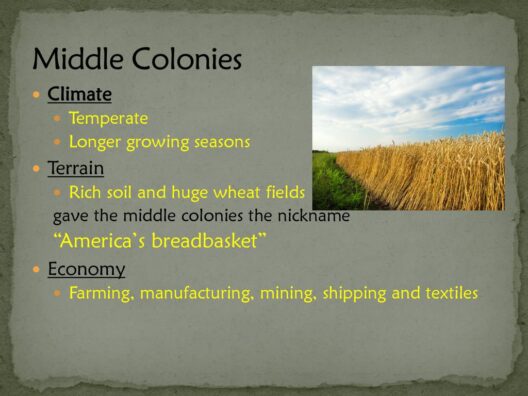Florida, often lauded for its balmy climate and sunny disposition, finds itself increasingly ensnared in the grip of climate change. The repercussions of global warming are astutely visible across the state, giving rise to compounding environmental concerns that threaten both its natural ecosystems and human habitation. This analysis delves into several facets through which climate change impacts Florida, detailing the implications for its delicate balance of nature, economy, and infrastructure.
Temperature Escalation: The most conspicuous manifestation of climate change in Florida is the meteoric rise in temperatures. Over the past century, the state has experienced a dramatic increase in average temperatures, with the last several decades serving as a critical turning point. Rising summer highs create an unbearable heat load, causing increased energy consumption as residents rely heavily on air conditioning. This surge in energy demand not only escalates electricity bills but also aggravates the state’s carbon footprint, perpetuating the vicious cycle of fossil fuel reliance.
Sea-Level Rise: As a peninsular state bordered by water, Florida is acutely susceptible to rising sea levels induced by ice melt in polar regions and the thermal expansion of seawater. Coastal cities like Miami and Tampa are on the frontline, facing the imminent threat of inundation. Flooding events are becoming increasingly common, with king tides overtaking roadways and waterfront properties. The majority of Florida’s population resides in coastal areas, placing millions of lives and properties at risk.
Moreover, the saltwater intrusion into freshwater aquifers exacerbates water scarcity issues. This encroachment leads to the degradation of drinkable water supplies, vital for both residents and agriculture.
Intensifying Storms: Hurricanes and tropical storms are part and parcel of Florida’s climate experience, but climate change is altering their potency. Warmer sea surface temperatures contribute to the formation of more intense storms, characterized by increased wind speeds and precipitation. The destruction wrought by hurricanes such as Irma and Michael showcases the state’s vulnerability. Each storm leaves behind a trail of devastation – from damaged homes to ravaged ecosystems – and the economic toll is staggering. Recovery efforts place a heavy strain on local and state resources, not only financially but also in terms of societal resilience.
Impact on Flora and Fauna: Florida’s rich biodiversity encompasses vast wetlands, subtropical forests, and expansive shorelines, which harbor unique flora and fauna. The effects of climate change on these ecosystems cannot be overstated. Changes in temperature and precipitation patterns disrupt the delicate balance required for many species to thrive. For instance, the iconic mangrove forests, essential for shoreline protection and as a nursery for marine life, are under threat. Altered salinity levels and shifting sediment patterns jeopardize their survival, all while affecting the countless species that depend on these habitats.
Additionally, the rise in temperatures creates favorable conditions for invasive species to proliferate, further challenging native ecosystems. For example, the Burmese python, introduced to Florida’s Everglades, has thrived in warmer temperatures, leading to significant declines in native mammal populations. Protecting Florida’s biodiversity therefore becomes an urgent endeavor in light of these changes.
Economic Implications: The economic landscape of Florida is profoundly intertwined with its environmental health. Tourism, a cornerstone of the state’s economy, faces risks as natural attractions alter due to climate change. Beaches erode, coral reefs suffer from bleaching events, and the wildlife that draws tourists diminishes. With a significant portion of jobs stemming from this sector, the economic ramifications are devastating. Local businesses that rely on the influx of visitors experience downturns; hence, the economic fabric of Florida is at stake.
Beyond tourism, the agricultural sector is also on unstable ground. The rise in temperatures and changes in precipitation patterns adversely affect crop yields. Crops such as citrus, which have long been synonymous with Florida’s identity, face diminishing viability due to increasing susceptibility to diseases and pests as their growing season shifts. The agricultural community must navigate this uncertain territory, leading to adaptation strategies that may not always be economically viable.
Mitigation and Adaptation Strategies: As the effects of climate change continue to proliferate, Florida must engage in necessary dialogues surrounding mitigation and adaptation strategies. Policymakers are increasingly acknowledging the imminent threat, integrating climate models and scientific data to develop more resilient infrastructure. Coastal planning is becoming paramount, with initiatives to restore natural buffers like mangroves and wetlands that can help mitigate flooding.
Moreover, state policies aimed at promoting renewable energy sources are gaining momentum. Transitioning from fossil fuels to solar and wind energy presents a pathway towards reduced emissions. Investing in energy efficiency and sustainability becomes a dual benefit: alleviating environmental impacts while safeguarding economic interests.
Community Engagement: For Florida’s response to climate change to be effective, community engagement is vital. Grassroots movements and local organizations play a crucial role in raising awareness and advocating for sustainable practices. Public education campaigns can empower citizens to make informed decisions about energy consumption, conservation, and support for sustainable policy initiatives. Harnessing the collective power of communities can facilitate positive change on a broader scale.
In conclusion, Florida’s battle with the ramifications of global warming is multi-faceted, touching on environmental, economic, and social realms. As the state navigates these turbulent waters, solutions must rise to meet challenges head-on. The dialogue surrounding climate change must be underpinned by scientific evidence, community involvement, and innovative thinking, ensuring that Florida can thrive even amid adversity.








